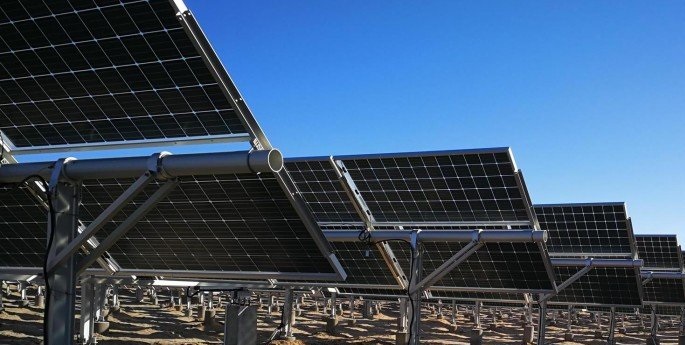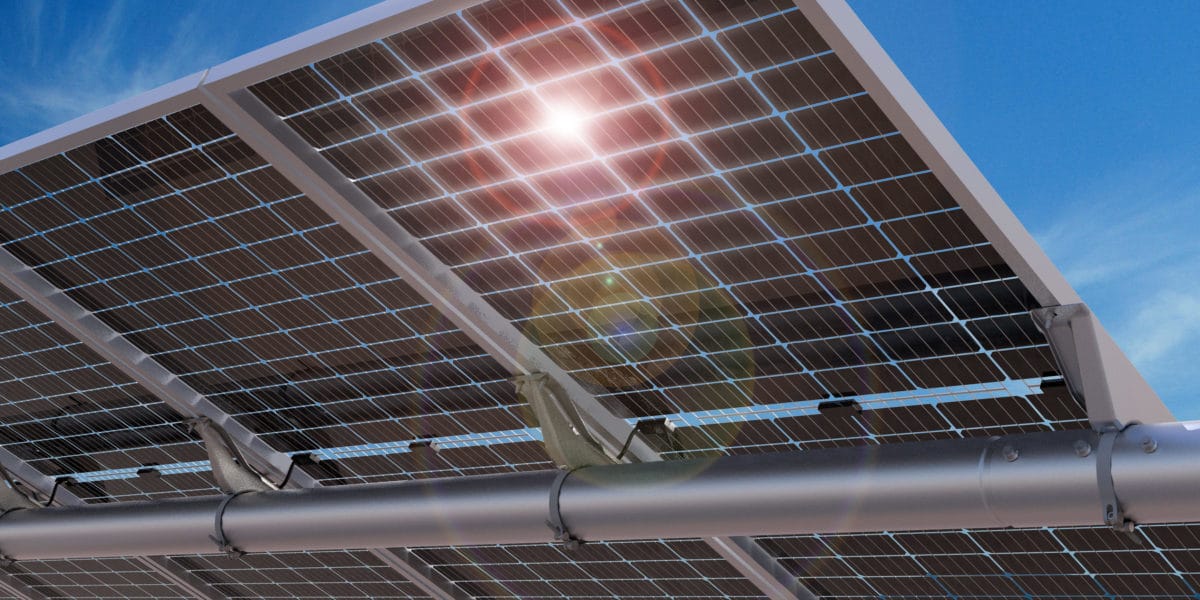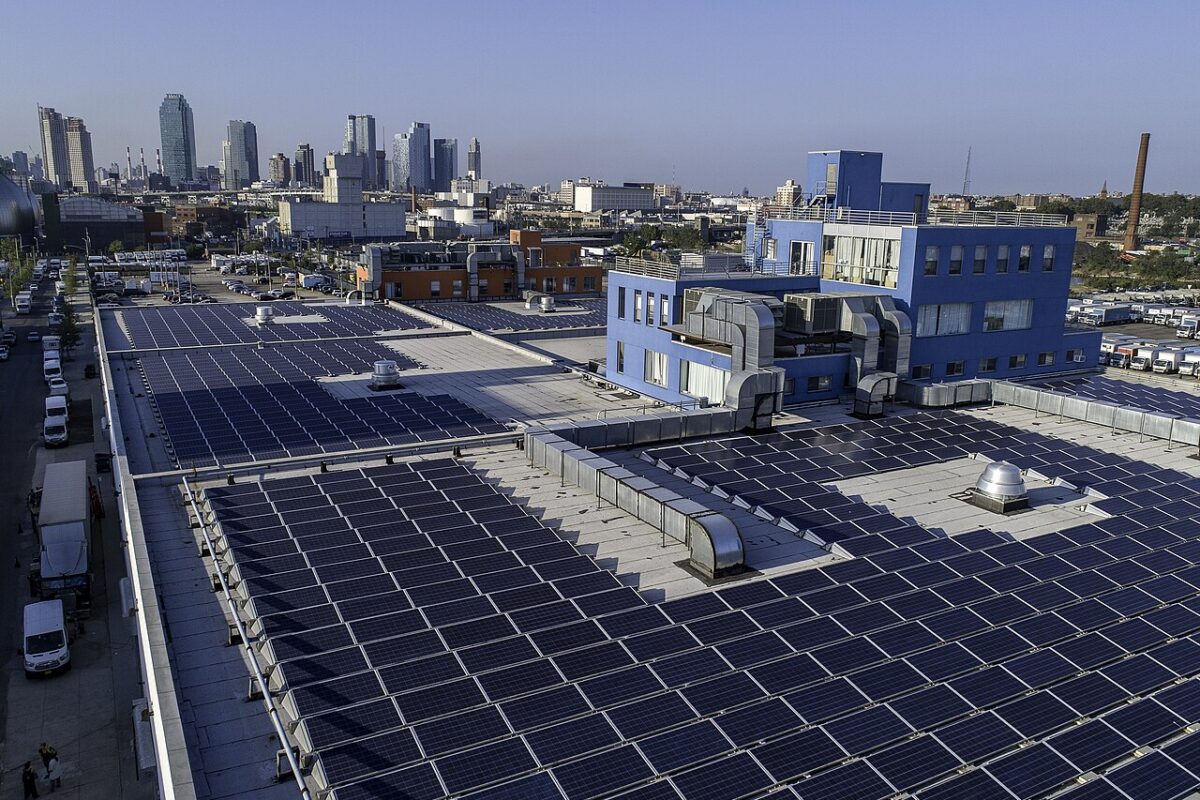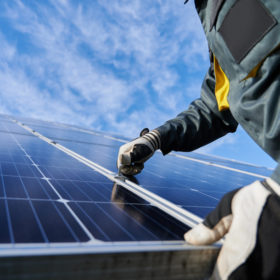This pv magazine author has read articles suggesting that the lowest bid ever for a large scale solar power project – 1.785¢/kWh by the Abu Dhabi Future Energy Company in June of 2017 – was declined because the product it was using to create that 24% lower price per kWh than its nearest competitor was just a bit too snazzy. It was suggested that the product was, in fact, a bifacial solar module on a single-axis tracking system.
Invenergy, a privately-held developer and operator of wind and solar energy solutions, announced that it completed construction financing on Dec. 19, 2018 for its largest solar project to date, the 160 MWac / 224 MWdc Southern Oak Solar project, located in Mitchell County, Georgia.
The project signed a 30-year power purchase agreement with Georgia Power to buy all of the energy, environmental attributes and electrical products from Southern Oak Solar through 2049, as part of the utility’s Renewable Energy Development Initiative (REDI) program. The project is contracted to be mechanically complete by the end of the year.
LONGi bifacial solar modules and NEXTracker single-axis trackers using TrueCapture™ control systems filled out the hardware.
According to NEXTracker, this project is the first and largest (Canadian Solar’s portfolio of projects totalling 10MW is also notable) in the United States to introduce bifacial modules and trackers. This morning, after pv magazine asked a question via LinkedIN, CEO Daniel Shugar (Shug) called us and excitedly talked about a decade long love affair with bifacial solar modules plus single-axis trackers.

Shug says the NEXTracker platform was conceived as a bifacial module product – it’s “perfectly” balanced to minimize energy usage, and is self-powered by its own solar module. With the round tube, as well as the minimal amount of hardware between the modules and the ground, “differential lumination” is minimized.
The big reasons that bifacial modules are hitting the big time, according to Shug, are that the quality of the monoPERC pv cells have improved greatly, recently PVSyst came out with the ability to model bifacial modules, and them being pretty accurate “in its thinking about backside shading.”
With that, he told pv magazine that NEXTracker has this Invenergy project as one of a series of bifacial projects that the company is engaged in with multiple developers, totaling over 750 MW of product under fulfillment in the United States alone.
This is significant because it represents a new product that can offer a significant bump in production at very little additional cost. For instance, when preparing sites, to take greatest advantage of the bifaciality of the module, maximizing albedo with white rocks or other substances will add to the civil costs. However, at scale, bifacial solar modules won’t cost any different than standard solar modules.
LONGi has presented that a bifaical module can produce 27% greater electricity than a standard module on a fixed rack and that a standard module on a tracker might produce 14.5% less than a tracker plus bifacial.
NEXTracker suggested we not quote any particular numbers like above, because every project has many unique variables that complicate the true benefit that comes from a bifacial plus tracker systems – and that if you really want to know the numbers, of course, give your local salesperson a call and go over the site details, your local sunlight, and your DC:AC ratios (and whether you’re adding storage to capture clipped electricity).
There’s much work going on in the research of bifacial. In November, as part of the U.S. Department of Energy (DoE) Solar Energy Technologies Office (SETO) 53 investments in the sun, DNV GL was awarded $200,000 for a bifacial module energy modeling validation study. Also as part of this program, Case Western University was given a chance to research a 50 year glass on glass solar module lifetime – the type of product that bifacial modules are. Meaning 50 year power purchase agreements are coming!
And maybe bifacial modules will also melt snow a little faster, as per a recent tweet by Yingli below:
https://twitter.com/YingliSolar/status/1060016842138243074
This content is protected by copyright and may not be reused. If you want to cooperate with us and would like to reuse some of our content, please contact: editors@pv-magazine.com.








John, thanks for covering this exciting story about bifacial successsful financing in the US. I loved the side by side image for the Yingli modules, where the bifacial ones are snow-free. Thx Shug
Very intresting. What seems to be the most efficient panel is the best buy.